This week, I am also attending the 14th International Conference on Advanced Data Mining and Applications (ADMA 2019) conference in Dalian, China, from the 21st to 23rd November at Dalian Neusoft University of Information.
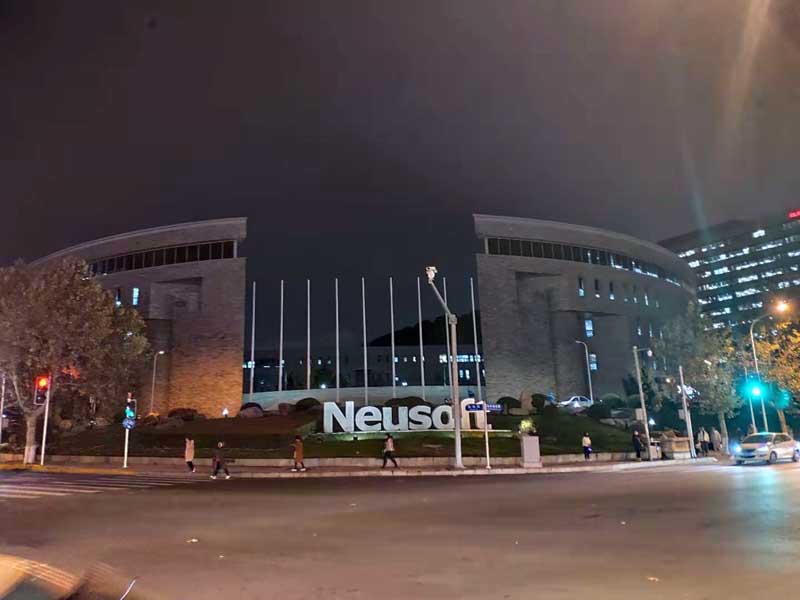

About ADMA
The ADMA conference is focused on data mining and its applications, and is generally held in China. It was held evey year since 2005, except in 2015. I have attended ADMA 2011, ADMA 2012, ADMA 2013 and ADMA 2014, ADMA 2018, and now I am here for ADMA 2019. ADMA is a medium-size conference but I like to attend it as it generally still has some high quality papers and it is convenient for me to attend it as I am currently living in China.
Proceedings and acceptance rate
For the 14th edition of the conference, 170 submissions were received, and 39 were accepted as full paper (acceptance rate of 23%) and 26 more as short papers. This is a considerable increase in the number of submissions compared to last year, where 104 papers were submitted to ADMA 2018 .
The proceedings are published by Springer in the LNAI series, which ensures good visibility to the papers.
Registration
On the first day, I registered and received the conference bag containing the program, a pen, a note book and a guest conference badge. The proceeding book was available online. Although, I would have enjoyed having a physical copy of the proceedings, I have to admit that an online proceedings is more environment-friendly.
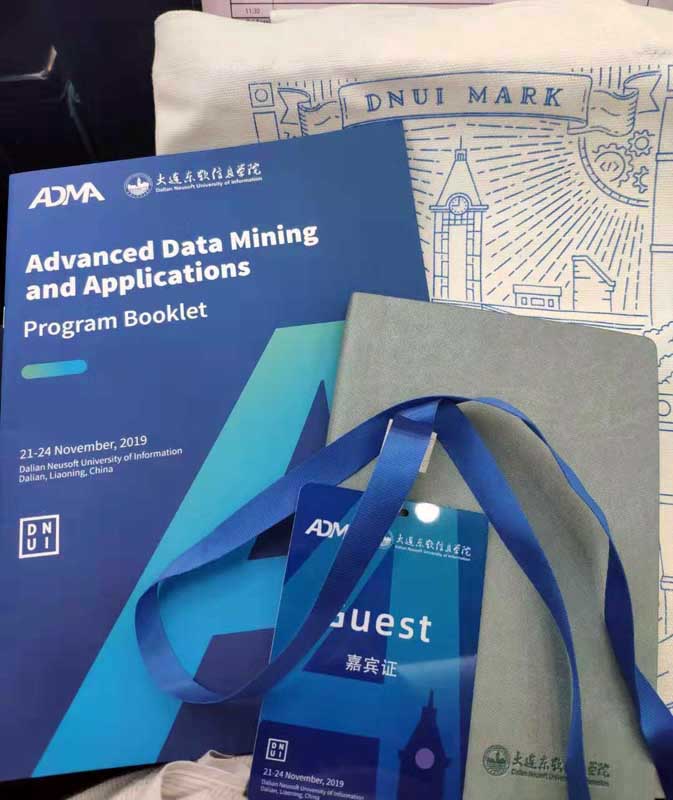
Day 1
The conference started with the opening ceremony, where the founder of the conference, Prof. Xue Li talked about the history of the conference.

Then, there was a keynote speech by Chengqi Zhang about “AI for Social Good“. He first discussed about the AI turing test and the use of AI for different goals: functional simulation, perception and action. Then, he discusses three corresponding ways of doing AI that are knowledge-based reasoning systems (symbolism) and data-driven neural networks (connectivism), and behavior-based action system (behaviorism). He also emphasized the importance of combining different aspects of AI such as perception, action, and image and language understanding. He then talked more about what is AI, and how AI can make us happier, healthier and wealthier. He discussed applications such as medicine and self-driving.
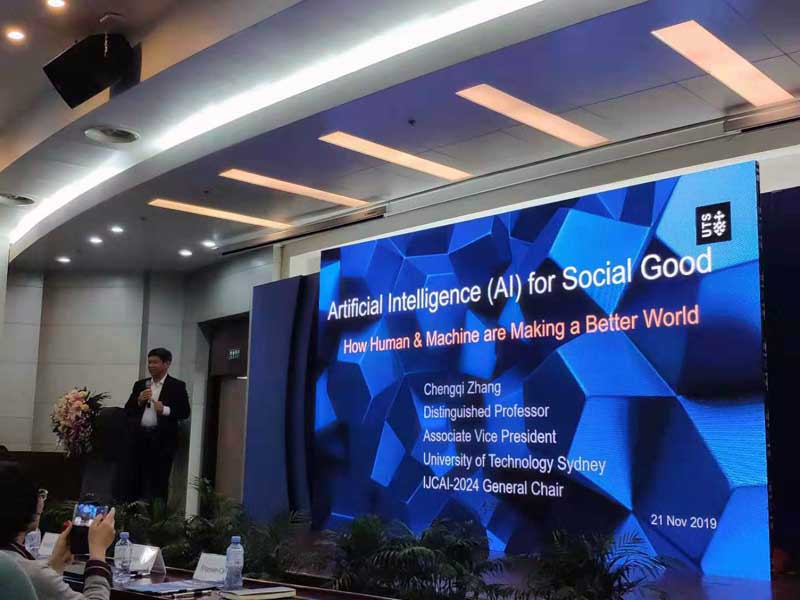
Then, there was a second keynote, by Guoren Wang about ” Big Data 2.0: Future Data Computing“. He first talked about the history of innovation for Big Data technology, from Relational Database Systems relying on SQL/ACID database systems, to distributed systems, to NOSQL databases, to real-time technologies. He also talked about the evolution of big data computing frameworks such as Hadoop from Hadoop 0.0 (2007) to Hadoop 3.0 (2016), and newer frameworks such as Apache Flink and Spark Streaming for stream processing, and framework such as Apache Beam that support both stream and batch processing. He also talked about trends such as geo-distributed data centers and edge computing
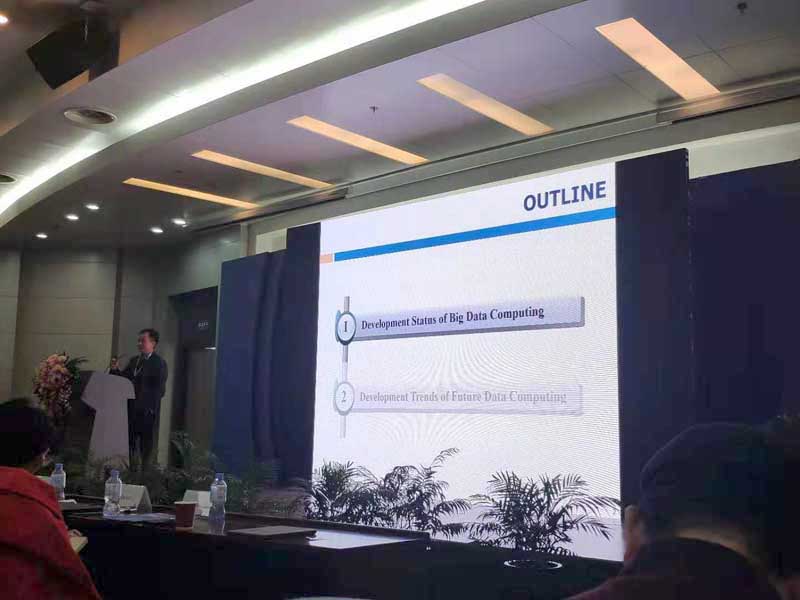
Then, in the afternoon, there was several paper presentations. I presented a paper about a faster algorithm for high utility episode mining, named HUE-SPAN. In this paper, we first show that there is a problem in how the utility of episodes is calculated in previous work on high utility episode mining, and propose a solution to that problem. Then we present novel strategies and a tight upper-bound for high utility episode mining that result in the more efficient HUE-SPAN algorithm. The PPT about HUE-SPAN is available here.
Also related to the topic of mining patterns in data, I enjoyed the paper presentation of Acquah Hackman et al. called “Mining Emerging High Utility Itemsets over Streaming Database “, which receive the best student paper award.
I also enjoyed the presentation about discovering sequential rules in time series data by Benoit Vuillemin “TSRuleGrowth: Mining Partially-Ordered Prediction Rules From a Time Series of Discrete Elements, Application to a Context of Ambient Intelligence“, which was inspired by some ideas of my TRuleGrowth algorithm but for time series.
Then, there was a buffet in the evening to close the day.
Day 2
On the second day, there was a keynote by Prof. Vincent S. Tseng about deep learning and broad learning for medical AI. Broad learning means the fusion of multiple heterogeneous data sources for learning a model. To do broad learning, we can collect data from multiple data sources, devise a model to fuse the information from these heterogeneous data sources, and then mine information from each data source to then build a global model. Prof. Tseng then discusses medical AI systems, and some specific applications such as health prediction, and disease risk prediction.

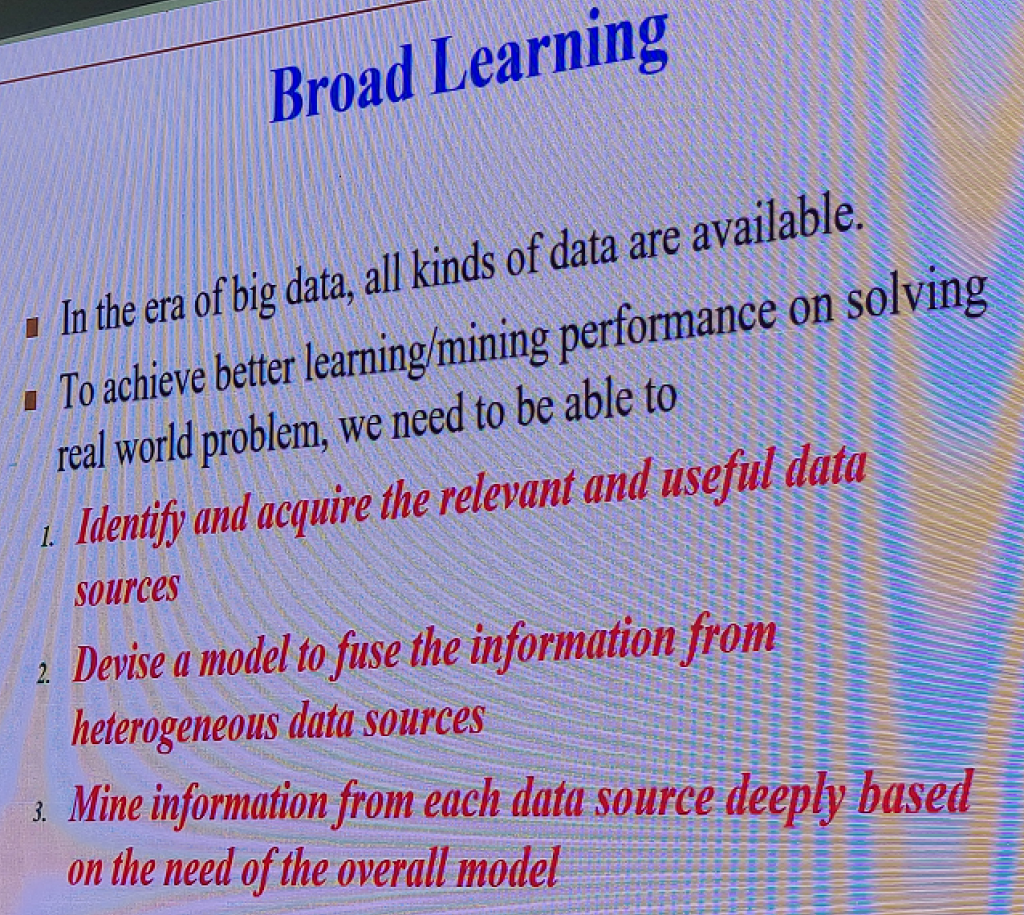
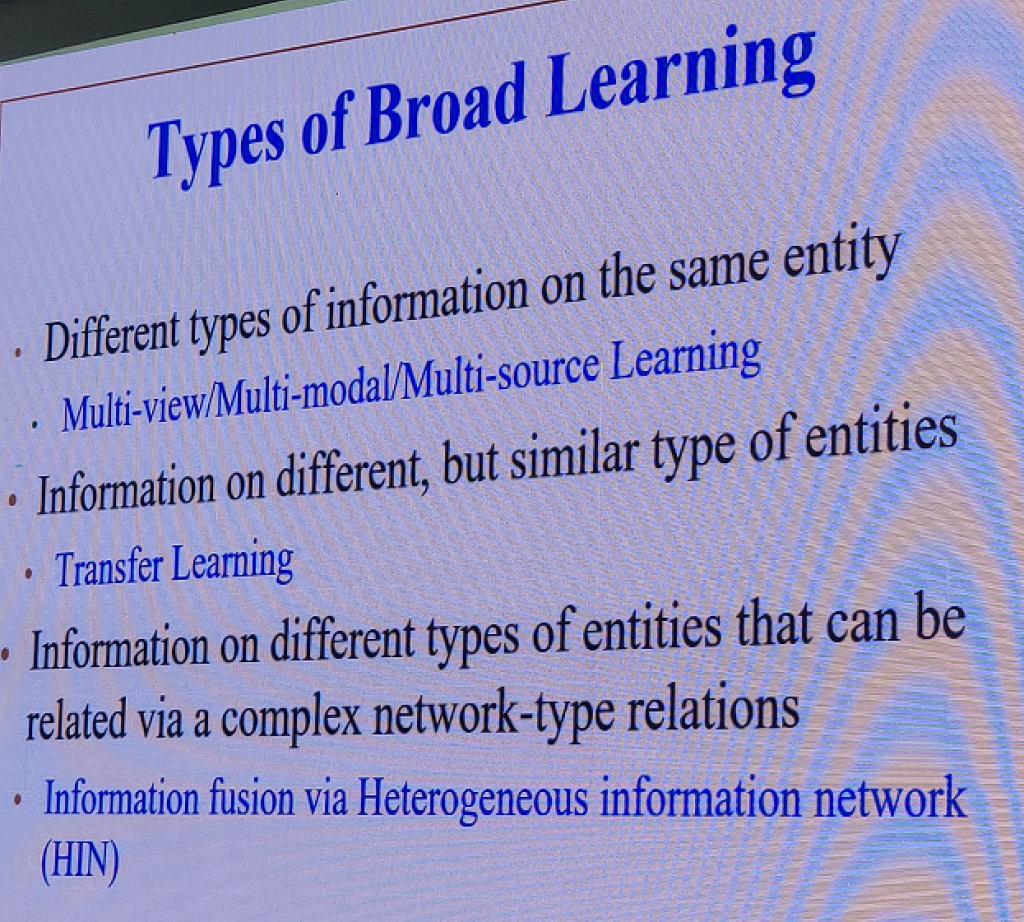
There was then a keynote on geo-social recommendation by Prof. Hongzhi Yin.

Then, there was more paper presentations, and finally the gala dinner, where the best paper award winners were announced.
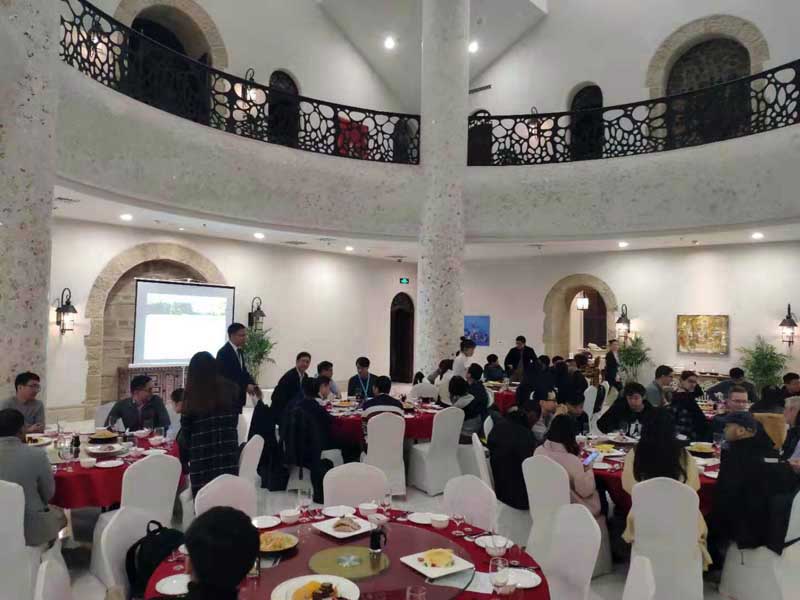
I was very happy to see that the paper “Tourist’s Tour Prediction by Sequential Data Mining Approach” by Baccar, L. B., Djebali, S., Guérard, G. won some award as they have used my SPMF data mining software in their work.
Day 3 and 4
On the third day, there was more paper presentations, and on the fourth days, there was a workshop related to health data.
ADMA 2020
Next year, the 15th ADMA conference (ADMA 2020) will be held in the Foshan area of the city of Guangzhou in China.
Conclusion
I enjoyed the conference. It is not a very big conference but usually the paper quality is fine. I will probably submit a paper again next year.
—
Philippe Fournier-Viger is a full professor, working in China, and founder of the SPMF open-source data mining library.





Pingback: Brief report about the MIWAI 2019 conference | The Data Mining Blog
Pingback: Report about the 13th ADMA conference (ADMA 2018) | The Data Mining Blog
Pingback: Brief report about ADMA 2021 | The Data Mining Blog